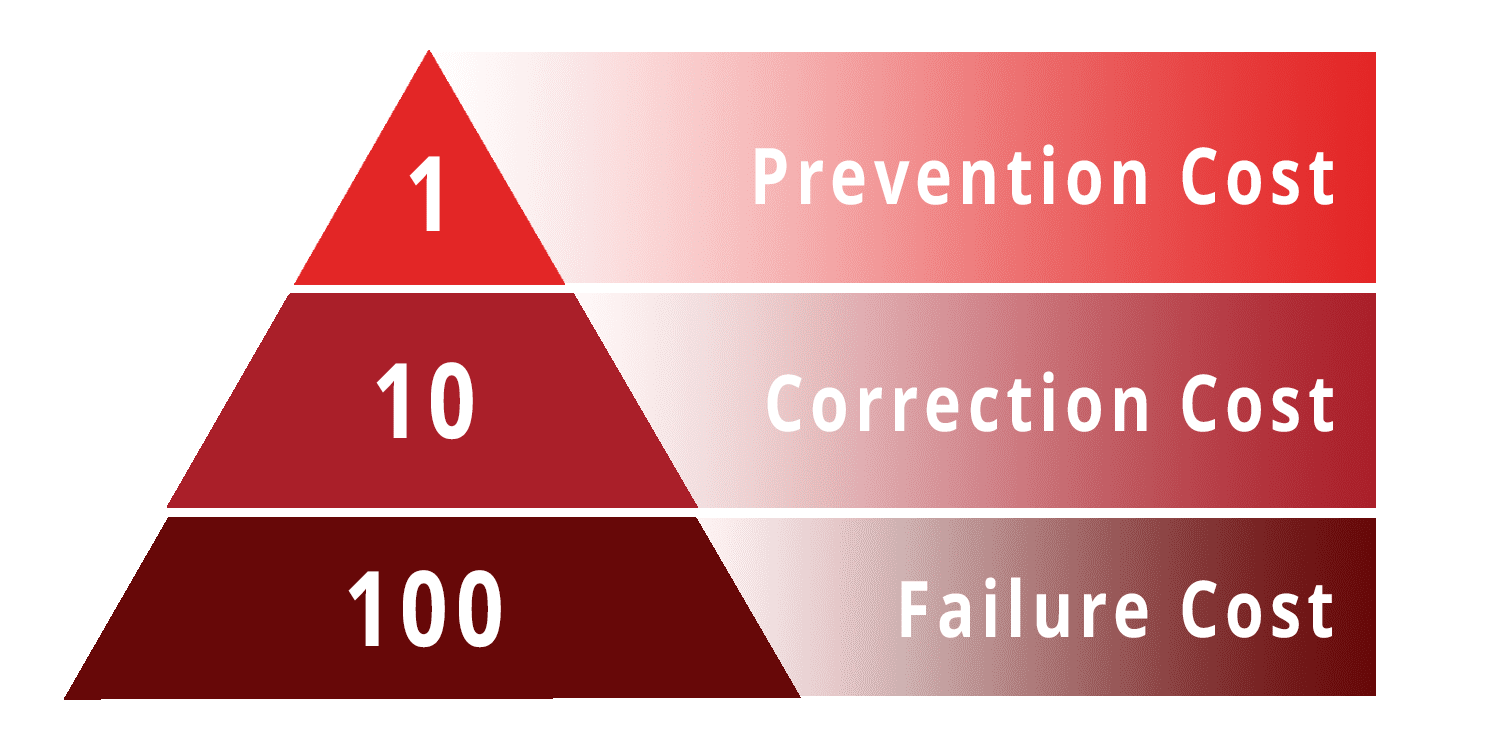Whether you are manufacturing cars, clothes, electronics, or anything in between, scrap is always a constant battle – mistakes and oversights happen, and rework is a necessary evil. In a perfect world, there would be no scrap; every product would be created perfectly the first time, every time. Unfortunately that is not the case, BUT, fear not, there are things you can do to reduce scrap!
This may sound obvious, but the earlier an error is found, the lower the incurred scrap costs. Another way of thinking about it is the 1-10-100 rule which states that as a product moves through the manufacturing system, the costs of correcting the error multiplies by 10.

However, the cost of upsetting a customer and losing business could be immeasurable.
Empower your employees to Stop. Call. Wait. This concept refers to an employee’s responsibility to “STOP” a process when something abnormal (defective) occurs, “CALL” for support and “WAIT” for the support to arrive before proceeding.
EVERYONE is encouraged to STOP what they are doing if they feel something with the process or part is not normal! Examples:
- Safety – loose or missing guarding, sharp edges or corners, insufficient work holding, inadequate/undersized design…
- Cosmetic Quality – Physical appearance, color, burn marks, scratches, dents, debris, uneven cuts…
- Dimensional Quality – Mating parts do not line up, part does not measure to design standards, parts or features missing…
- Process – Equipment making strange noises, excess vibration, excess heat, unrepeatable results, unexpected outcome…
It is important to have a sense of urgency – remind them not to just wait to ask their supervisor the next time they see him/her.
They should:
Gather the facts – provide all of the information they know about the concern.
Provide recommendations – the people closest to the work have the best ideas. They shouldn’t be afraid to provide their input into the situation.
Verify – once the situation has been addressed, verify that the solution solved the problem.
DO NOT continue with the same process so the issue can be contained!
. Track it:
- How far into the manufacturing process did this get before the error was discovered?
- How many products were affected?
- Can any of the parts or materials be salvaged/reused?
- What is the total cost of all of the defective materials?
. Improve the process on the top issues:
Review the manufacturing processes. Are you finding that one particular machine is causing more defects than others? Dig deeper into why, and work to remedy the issue, maybe it is as simple as a minor machine adjustment. What if the defects are consistently found after coming out of a certain department? Put time into re-training the employees and understanding why the issue occurred or was overlooked – do they have the tools and resources to ensure quality? Are the Standard Operating Procedures (SOPs) current?
Be sure to clearly communicate any changes throughout the entire supply chain.
. Measure results:
Don’t just implement a change and forget about it, carefully and consistently monitor the change and the results, both positive and negative, and make adjustments as you see fit.
. Repeat:
It is much cheaper to prevent an issue than to correct one!
Prevent scrap and rework from cutting into your company’s bottom line. DON’T FEED THE SCRAP MONSTER!

What tips/tricks have you found to help reduce scrap? Comment below.
